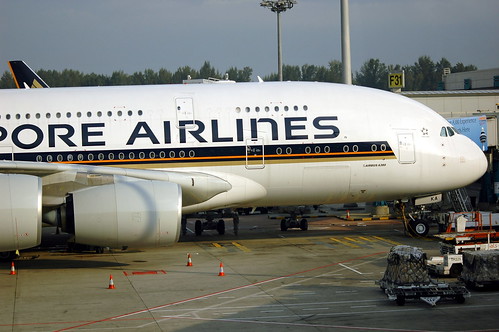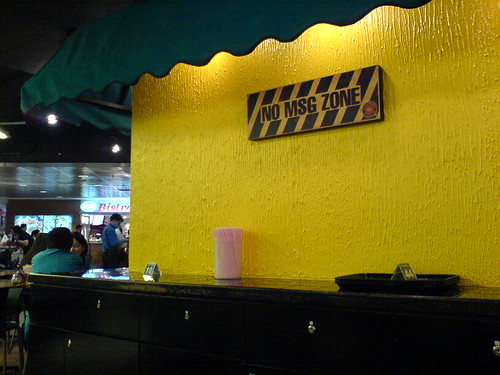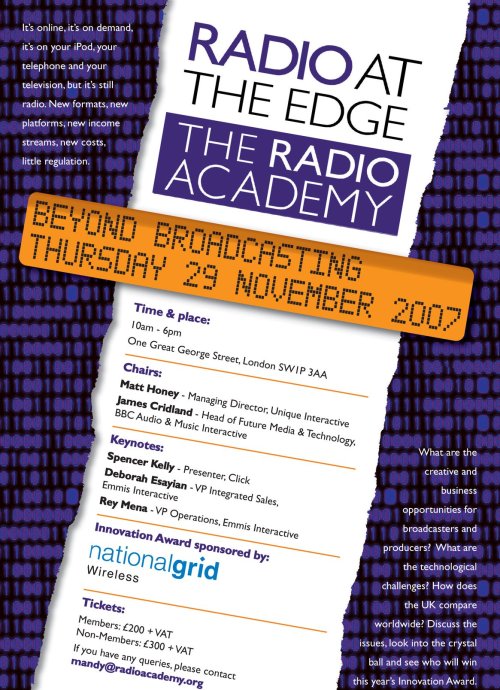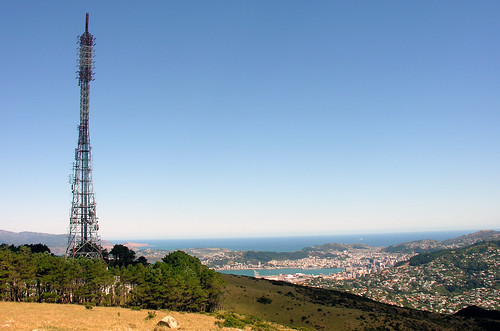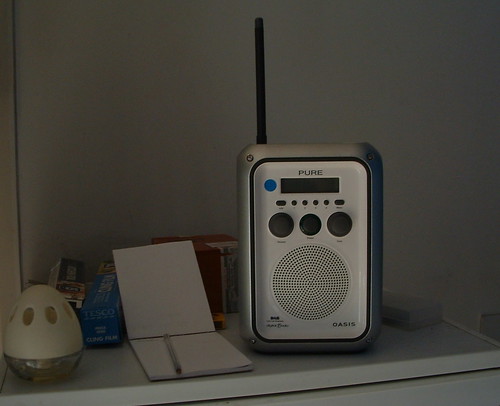
Fridge Top by Kill Pop @ flickr (CC)
There’s a BBC kids TV show which includes an animated sequence featuring a blue cow having the most incredulous imaginary adventures. The verbal cue for this segment is for one cow to turn to another and say, in a bored, drawn-out drawl “Oh.. She’s at it again…”.
Anyway, Jack Schofield’s written another article about DAB/DAB+ etc. in the Guardian today. It’s here, although you’ll probably either have seen it already or have a fair idea of what it says.
Basically, Jack’s postulation (and I know you’ll be shocked to hear this) is that there’s no point to DAB Digital Radio. It’s low sound quality, and you can get the same (in his opinion, mediocre) range of channels from Freeview or a WiFi Radio.
Done the sound quality thing. Jack has a gourmet view, the vast majority of people appear to have Tesco/Asda view. There will be quality platforms for audio, but they’ll appeal to, and have to be funded by, the diminishingly small number of people with sufficient passion for it. So I’m not going to reheat that debate again.
But let’s look at Jack’s view on how you’ll get radio, range of choice and quality of content.
I’m bemused that Jack thinks that the absence or presence of DAB will change the quality of radio programming. If quality is an inverse product of quantity, and technologies like broadband, digital satellite, direct satellite, cable, 3G (… continue at your leisure) allow an unending amount of radio stations to be formed and distributed, how would having or not having DAB make a difference? In a way, by establishing a platform that does have some genuine cost to entry there is an investment threshold that needs to be cleared and that generally means having “a plan”. Think back to the early days of satellite TV and how the “quality press” used to lay into the quality of programming then. Don’t journalists learn from the past? Now that digital TV is squarely established as the primary delivery platform, guess what – there’s more quality programming there.
Last point. DAB as a delivery platform. Jack encourages people to buy a WiFi radio or a Freeview box, because that’s a better investment than DAB. Well, don’t expect to pick your Freeview box and move it around the house, or have it on the kitchen windowsill, as it’s going to need one of those big “aerial” things on top of your house to work properly. So if you are going to use Freeview for radio, be sure to carry a length of RG75 coaxial cable round with you, a 8mm drill bit, some cable clips and a tube of waterproof filler for all the holes you’re going to drill in your window frames. And don’t be disappointed if radio is dropped from the Freeview platform to make way for more TV.
WiFi Radios are certainly fine. I have one, in my kitchen. There’s a specific, unusual, reason for that which certainly (and I can prove this statistically if required) puts me in less than 4% of the population. My kitchen WiFi radio is on for 5-10 minutes a day. But WiFi radio is predicated on a future of unlimited, unmetered, internet bandwidth, which certainly isn’t a given. And it requires a certain Quality of Service to operate correctly, which also isn’t guaranteed. If Internet streaming radio ever made anyone serious money, you can bet that the ISPs in the middle would want to find a way of worming their way into the business plan.
Referring back to my representative British Radio Listener, when presented with a choice of over 6,500 radio stations to listen to, what are they going to do? Yes, they’re going to listen to the ones they know. There is a point where increased choice goes beyond what’s viable for people to understand.
It does appear that Jack lives his life within the confines of his home. I wonder how he envisages people listening to radio on the move in the future? Car? Handheld radio? Travelling away from home? Your WiFi radio will work, apparently for free once you’ve paid for your broadband, within the radius of your WiFi router. But no further.
DAB is not the platform for a high quality audiophilic listening experience. DAB is not the platform to provide over 6,500+ channels of radio stations. It’s not positioned to do that, it’s not marketed to do that, so don’t compare it against those expectations and claim it’s a failure.
DAB is the most pragmatic, cost-effective, universally available technology for radio’s digital future. It’s not the only technology – IP, 3G, Satellite etc. will all have their place – but DAB is the best all rounder for the medium that’s all around us.
[Bootnote] Happy Birthday to DigitalOne, which launched at 11am on the 15th November 1999, and is widely credited with catalysing the growth of DAB Digital Radio in the UK. DAB is still growing in popularity, which might not be said of “Sporty Spice” who performed the switch-on.
